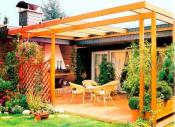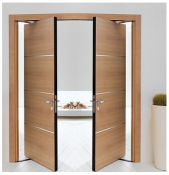Search
Login
How to strengthen the shores of a reservoir in a summer cottage
To make a pond created by your own hands at a summer cottage site attractive and original, it is not enough by all rules to build its bowl and plant water plants in its coastal zone. To a greater degree, charming pond or brook will serve as the correct design of the coast. It is to this question that one should approach with knowledge of the matter, in addition, one will need to attract one’s imagination and, of course, a creative approach to solving the problem.
Content:
- How to strengthen the shores of the reservoir video
- What materials can be used when designing the shoreline of a reservoir with a concrete bottom video
- The design of the shore of the reservoir with a film bottom
- Strengthening the coast with coke mats
- How to connect the concrete or stone borders of a pond with a lawn video
- The pond of the correct form - how to design its shores
How to strengthen the shores of the reservoir

A competent approach to the design of the shores of the reservoir will help create an attractive decor, and at the same time strengthen the coastline, preventing the threat of erosion. It is not difficult to find useful information about what materials it is desirable to use when installing a bottom waterproofing and edging a reservoir, about which water plants to plant in it, but recommendations on how to strengthen the banks of a reservoir are not so common.
What materials can be used when designing the shoreline of a reservoir with a concrete bottom

Since the coastline is perfectly visible in the landscape design of the site, the materials for its strengthening and decoration should be combined with the style of the garden and home. In most cases, natural stones or their artificial analogues are used: marble, granite, gravel, pebbles, crushed rocks, sometimes paving slabs, sand, even hardwood are used.
If the base of the pond is concrete, then an acceptable option may be: ceramic fragments, glass mosaics, marble chips. They are beautifully laid on concrete mortar. When using ceramic or glass fragments, their sharp edges must be pressed into the concrete.
A prerequisite for successful work is a firm fixation of each fragment that strengthens and decorates the shore in a specific place. So the fixation of stones, paving slabs or bricks is done through cement mortar. Since it is customary to use moisture-loving plants when designing the coastline, one should not forget about the need to leave pockets for planting them.
The design of the shore of the reservoir with a film bottom

If the bottom of the pond is isolated with a film, then a decorative film coated with a layer of gravel can be used as its coastline - it will help create an imitation of a mountainous terrain. Such a film is laid on top of the waterproofing, its edges are fixed by gluing to the layer of waterproofing material. The stony edges of the finish film should extend beyond the coastline.

On the edge of the reservoir, stones of different sizes are laid out on the film, trying to create a line resembling a natural landscape. Using this method is the simplest and cheapest option for creating a beautiful pond decor with your own hands.
Strengthening the coast with coke mats

To strengthen the shore of the pond with sheer walls and a film coating, it is recommended to use coconut mats. They have a dark brown color, with a decrease in water level, if used, an unattractive picture created by the exposed edges of the film will not be observed. In color, mats are very similar to natural soil, they allow the growth of coastal hygrophilous plants through their structure. Vegetation well decorates the coastline, and the roots of plants help strengthen the coast in a natural way.

With the technology of laying coconut mats is not difficult to understand. Begin laying from the coast without pulling the material. The lower part of the skein is lowered along the wall of the pond by about 0.5 m. The upper part is fixed ashore using reinforcement. Mounting glue is used to fix the mat on the PVC film. The joint of coconut leaves is formed with an overlap of about 20 cm, while it should be borne in mind that the direction of overlap should be on the side inaccessible for viewing.
Part of the mat immersed in water is covered with sand and fine gravel, and part of it on land is covered with plant substrate.
If it is not possible to decorate the shore of the pond with stones, they resort to strengthening the shore with their own hands using vegetation, creating a design option that is as close as possible to the natural landscape. More often this option is used in landscape style.

Among the benefits of using coconut mats should be noted:
- the purity of the natural mat material,
- work does not require serious financial costs,
- the laying process is simple, it is easy to do it yourself,
- the material provides banks with proper protection against erosion for a long period,
- the structure of the material allows plants to germinate through it, their roots contribute to shore strengthening,
- mats do not lose their qualities from exposure to ultraviolet radiation and substances formed in the process
- decomposition of organics.
Mats well hide waterproofing material and serve as the location of the rhizomes of aquatic plants and vegetation of the coastal zone. In the event that coconut mats are not used, then the edges of the waterproofing film are hidden under the lawn grass to a depth of 10 cm. But when the water level drops, the film will be clearly visible. In addition, after rainfall in the coastal zone, a flooded meadow will form, in the summer it will disappear quite quickly, but in the fall it can cause problems.
This suggests that saving on mats is not the best option, laying them under the lawn will hide the waterproofing, avoid the appearance of flooded areas of the lawn and preserve the coastline in integrity.
How to connect the concrete or stone borders of a pond with a lawn

There are no special secrets to connecting materials that strengthen the coastline - stones or a decorated concrete surface go well with lawn vegetation, soil or plants on the banks of water bodies. Of course, it will be possible to achieve a good effect if the size of the stones is commensurate with the size of the reservoir - the smaller the size of the pond, the smaller the stones should be used to decorate the shore. More attractive will be compositions left from stones of a similar shape and structure.
Difficulties in creating an attractive composition can cause different types of stones - it is best to use one breed. For a beautiful laying of stones, the base is first prepared - black lutrasil is laid on the ground, covered with a layer of clean river sand and gravel. Larger boulders are placed so that some of them hang over the water. This helps to hide coastline errors.

The bottom of the reservoir is lined with the smallest of the available stones, closer to the shore - larger specimens are located. A solid line of stones along the perimeter cannot be allowed to appear - this will look unnatural. Also, the symmetrical arrangement of stone fragments does not look interesting. The interrupted edging created from randomly arranged stones and plants looks more original. Large stones are best placed flat, tilting them toward the coastline.
Do not rush to fix the stones on a cement base. It is best to first compose a composition, carefully consider it from different angles, and correct errors. Having convinced of the ideal composition, the stones can be fixed with cement mortar, and burying them in the solution is enough to 1/3 of the height. Be sure to leave a place between the stones for planting coastal plants.
The pond of the correct form - how to design its shores
Small gardens are best decorated with ponds that have regular geometric shapes. Their edging can be done using artificial or natural stones, tiles or ceramic mosaics, wooden elements. When choosing a material, it should be borne in mind that after precipitation, the ceramic and wooden surfaces become slippery.






